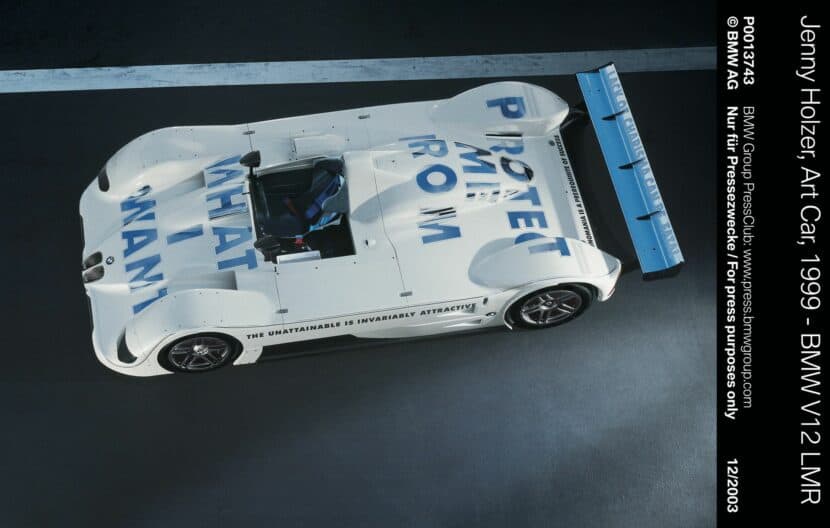The latest BMW’s Art Car project was unveiled this week in Paris at Centre Pompidou in front of a global audience. The new art car showcases the exciting blend of art and engineering. The 20th car in this series is the BMW M Hybrid V8, turned into a work of art by renowned artist Julie Mehretu. Known for her detailed and layered paintings, Mehretu brings a fresh perspective to this fast and powerful vehicle. Her journey in creating this masterpiece was full of challenges and innovations, especially with the car’s aerodynamics.
Julie Mehretu was born in 1970 in Addis Ababa, Ethiopia, to an Ethiopian father and an American mother. At age seven, her family relocated to the United States to escape the civil war. Mehretu earned her Master of Fine Arts from the Rhode Island School of Design in 1997 and now resides in New York. Her work has garnered widespread acclaim, earning her prestigious honors such as a MacArthur Fellowship in 2005 and the US Department of State Medal of Arts Award in 2015.
For the BMW Art Car project, Mehretu was unanimously chosen by a jury of esteemed gallery and museum directors. During a Q&A session in Paris, overlooking the City of Lights, Julie Mehretu answered questions about her vision for the car, the challenges she faced, the diversity in the art world, and much more. Interestingly, Mehretu initially turned down the offer to paint the BMW Art Car. However, the BMW Group Cultural Engagement team did not give up. After several attempts and discussions, she eventually agreed to take on the project.
Aerodynamics Meets Art
One of the main challenges Mehretu faced was the strict aerodynamic needs of a race car. Traditional painting or wrapping methods were not possible. “We couldn’t wrap the car because it will affect the aerodynamics,” Mehretu explained. This challenge required a new approach to ensure the car’s performance was not affected while adding artistic flair.
Mehretu worked closely with BMW’s designers and engineers to achieve this balance. “There were certain moments where we couldn’t wrap the car in certain places because it would affect the aerodynamics of the car,” she elaborated. They used digital and 3D models, starting with renders and creating a 1-meter MACAD model, a technique that helps conceptualize the ideas into reality.
A Digital Journey
The creative process began digitally. Mehretu used advanced 3D software to visualize her ideas on the BMW M Hybrid V8. This allowed for precise adjustments to ensure the final design worked well with the car’s aerodynamic needs. This digital approach not only maintained the car’s performance but also opened new creative possibilities. Mehretu could experiment with forms and shapes that might not have been possible with traditional methods. The result is a design that matches the car’s sleek and dynamic look.
Blade Runner: A Futuristic Vision
Mehretu and BMW designer Hussain Al-Attar, responsible for designing the race car, mentioned the internal name for the car “Blade Runner.” “It’s such an incredible thing to see this engine going in and how this thing is just made out of carbon fiber,” Mehretu remarked, linking the car’s construction to the futuristic world of Blade Runner.
Jenny Holzer: An Inspiration
Mehretu also found inspiration in fellow artist Jenny Holzer, known for her text-based art and deep social commentary. Holzer’s influence is visible in Mehretu’s approach, focusing on the connection between art, technology, and society. The intricate details and layered elements of the car’s design invite viewers to explore and interpret its meaning.
Another notable mention was Jenny Holzer’s car, which bears the phrase “Protect me from what I want” in her typical truism style. Thomas Girst, Head of Cultural Engagement at BMW pointed out, “Those are actually letters that light up at night, so you can also read them during the 24-hour race.”
Girst also shared an amusing anecdote, noting, “I think somebody from motorsports said, ‘Julie, if you come up with a better way to make this car lighter with your art, we’ll take your idea.'” This highlights the collaborative spirit and the innovative mindset that underpins the project.
Girst concluded by emphasizing how these historical elements and innovative designs speak to the car’s role in racing and art. “The artists incorporate all of these things that could happen to the car or that speak of the car while it races 24 hours, including Julie’s car when she says cars only dominate the race when the race is over.”
From Race Track to Video Game
Mehretu’s nephew is an avid video gamer and allegedly, there is a clause in the artist’s contract with BMW which stipulates that the BMW M Hybrid V8 Art Car should appear in a video game. This brings Mehretu’s work to a wider audience, allowing fans to experience the art in a new and interactive way.
Personal Significance and Legacy
When asked about the personal significance of the BMW Art Car project and the legacy she hopes to leave, Mehretu reflected on the uniqueness of the experience. “I keep going back to this because it’s this rare kind of thing that is happening for me outside of painting. And so it’s this other place to kind of be able to let the imagination do something else,” she shared. This project allowed Mehretu to explore a new dimension of her creativity, integrating her art with the dynamic and high-speed world of motorsports.
Mehretu hopes that this project will inspire future innovators and artists to push the boundaries of their own fields. “The idea of this vehicle going through a painting and then fundamentally changing…there’s something about that in terms of what happens to the car. And how the painting kind of attached itself to the car,” she mused.
Embracing The Racing Essence
When asked about balancing her artistic vision with the car’s purpose of speed and winning, Mehretu offered a profound perspective. “I think for me, it was more of a metaphor kind of play with that,” she explained. Unlike some artists who might radically alter the car, Mehretu chose to embrace its racing essence. “The idea is, it’s a race car. I wanted it to be something we could play with in that language,” she added.
“I can’t imagine that painting on a different kind of car,” she says, highligthing how integral the car’s design was to her creative process.




























































































